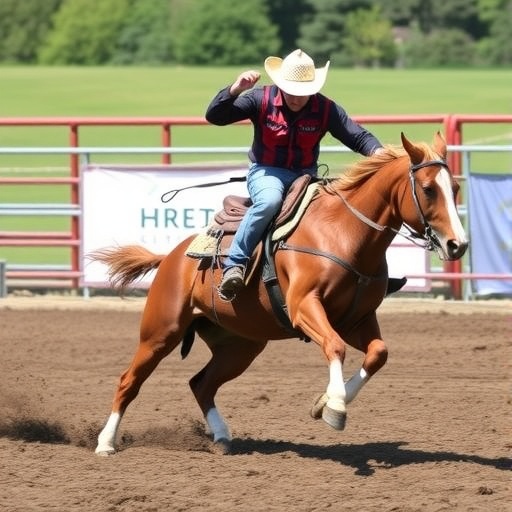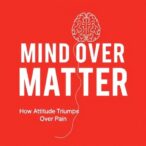In a groundbreaking study published in the Annals of Biomedical Engineering, researchers have examined a critical yet often overlooked aspect of collegiate rodeo athletes: the role of head acceleration events in their overall health and performance. Conducted by a team led by Carlson, C.D., and including experts like Miller, J.J., and Dorman, J.C., this research represents a significant leap in our understanding of the impact of rodeo sports on the athletes’ neurological well-being. The implications of these findings could reshape safety protocols and training methods in rodeo sports, demanding attention from coaches, healthcare providers, and sports regulatory bodies alike.
Rodeo, a sport steeped in tradition and skill, intricately involves high-speed maneuvers and powerful animal partners, culminating in conditions ripe for potential injury. Participants engage in events that showcase their prowess, such as bull riding, calf roping, and barrel racing. However, the forces exerted during these events, particularly those related to head acceleration, pose risks that are not fully understood. The study by Carlson et al. seeks to bridge this gap in knowledge by systematically quantifying head acceleration events among collegiate rodeo athletes.
In this study, the researchers employed sophisticated technologies to measure and document head acceleration during rodeo performances under controlled conditions. Utilizing sensors placed on helmets, they meticulously recorded data on the frequency, magnitude, and duration of head accelerations experienced by the athletes. The data collected was not only comprehensive but vital in presenting an accurate landscape of the challenges faced by these athletes during competition.
One of the startling revelations from this research was the frequency of significant head acceleration events occurring within short time frames during rodeo events. These occurrences were linked not only to direct impacts from falls but also to injuries sustained during high-stress situations associated with rodeo performances. The findings draw parallels to sports with similar risk factors, such as football, suggesting that rodeo athletes might be at risk for repetitive head trauma, which could result in long-term neurological issues.
Furthermore, the study intricately explores the different types of rodeo events to distinguish how each contributes uniquely to head acceleration. For example, bull riding, renowned for its intensity, resulted in the highest recorded acceleration levels compared to less perilous events like barrel racing. The variances highlighted the necessity for sport-specific safety equipment and tailored training regimens that emphasize injury prevention strategies.
Another critical aspect of the study was the authors’ examination of post-event assessments on the cognitive and physical health of the athletes. While the immediate focus was on head acceleration, post-event evaluations provided deeper insights into the athletes’ overall health status. Testing for symptoms of concussion and other brain injuries after competition revealed concerning trends; many athletes reported experiences or symptoms suggestive of mild traumatic brain injury, demonstrating a pressing need for better monitoring systems and education regarding concussion symptoms.
Interestingly, the findings underscore the importance of helmet usage within the sport. While helmets are not universally adopted among rodeo athletes, the data suggests a definitive correlation between the use of helmets and reduced head acceleration risk. The study advocates for the development of more advanced helmet technologies that could further mitigate the risks posed by these accelerations, opening a pathway for manufacturers to innovate and adapt their designs for enhanced protection.
At a broader level, the implications of this research extend beyond the realm of rodeo itself. As awareness surrounding athlete safety continues to grow, this study contributes a pivotal piece to the ongoing dialogue on sports-related injuries. By highlighting the need for comprehensive research and development in protective gear, this work aims to elevate safety standards not only within rodeo but across all sports that involve rigorous physical demands and potential head injuries.
Educational programs and workshops on the significance of head acceleration and its consequences are also vital outcomes of this research. Coaches, athletes, and sports organizations must embrace a culture of safety that prioritizes the well-being of its participants. By implementing educational initiatives focused on injury awareness and prevention, the rodeo community can foster a safer environment for its competitors, allowing the sport to thrive while protecting its athletes.
As this research garners attention, it sparks conversations about regulatory oversight within rodeo sports. The need for guidelines regarding helmet use and injury monitoring protocols is essential. Athletic commissions and governing bodies should consider integrating recommendations based on the findings of this study to enhance participant safety.
In conclusion, the work by Carlson et al. not only illuminates a critical aspect of collegiate rodeo but also serves as a beacon for further research in sports medicine. By emphasizing the importance of understanding head acceleration and its potential impacts, this study paves the way for a future where safety and performance can coexist harmoniously in rodeo and other high-risk sports. It invites stakeholders to engage proactively in enhancing safety measures to protect the athletes who dedicate their lives to this exciting realm of competition.
Strong advocacy for ongoing research in this field is vital to keeping pace with the evolving understanding of sports injuries. This study is merely a starting point, an invitation for more comprehensive investigations that illuminate the long-term effects of head trauma and establish frameworks for a safer sporting experience. The time to act is now, ensuring that the thrilling spectacle of rodeo remains a source of pride while safeguarding the health of its athletes.
As awareness regarding concussive injuries grows, it becomes imperative for sports scientists, clinicians, and coaches to align their efforts in fostering environments where the health of athlete remains paramount. The legacy of rodeo sports, rich in history and tradition, must evolve to embrace modern understandings of safety, ultimately ensuring that athletes can chase their dreams without compromising their health and future prospects.
Understanding the balance between competition and safety is a lesson that extends beyond rodeo. In an era where sports continue to captivate audiences globally, ongoing dialogue about head injuries and athlete health is crucial. This study serves as a powerful reminder that every rodeo competitor’s life and well-being deserve the utmost consideration and protection.
Through concerted efforts in research and education, the rodeo community has the power to change the narrative around athlete safety. By embracing innovative solutions and prioritizing awareness, we can safeguard future generations of athletes, ensuring that they can not only ride for glory but also ride towards a healthier, more secure future.
Subject of Research: Head acceleration events in collegiate rodeo athletes.
Article Title: Head Acceleration Events in Collegiate Rodeo Athletes.
Article References:
Carlson, C.D., Miller, J.J., Dorman, J.C. et al. Head Acceleration Events in Collegiate Rodeo Athletes.
Ann Biomed Eng (2025). https://doi.org/10.1007/s10439-025-03876-y
Image Credits: AI Generated
DOI: 10.1007/s10439-025-03876-y
Keywords: head acceleration, rodeo athletes, concussion, injury prevention, athlete safety, biomedical engineering.
Tags: athlete safety in rodeo sportsbarrel racing head injuriesbull riding safety measurescalf roping injuriescollegiate rodeo athleteshead acceleration eventshead injury risks in rodeoneurological impact of rodeoresearch on rodeo athlete healthrodeo performance health analysisrodeo sports safety protocolssports regulatory bodies and rodeo



